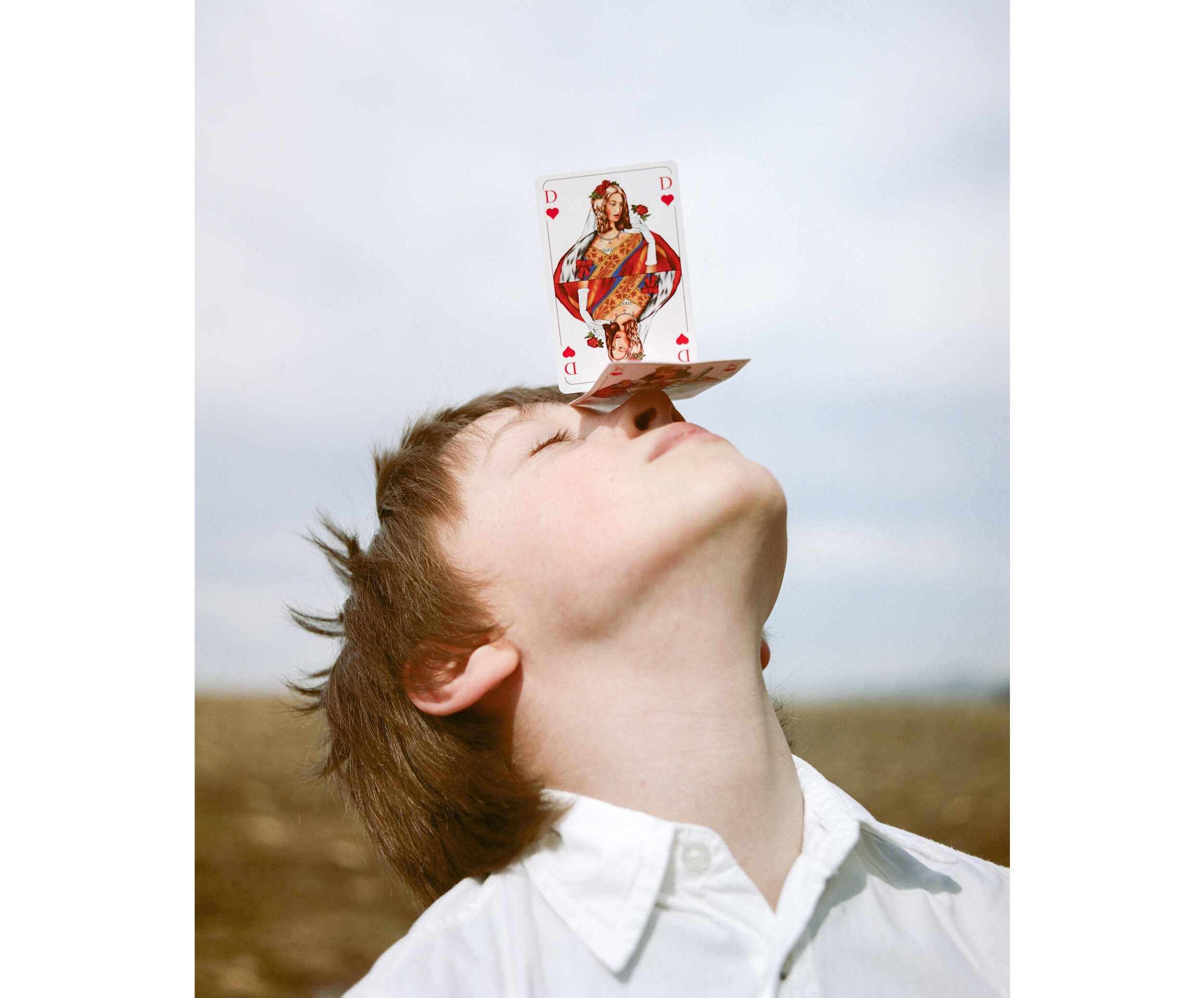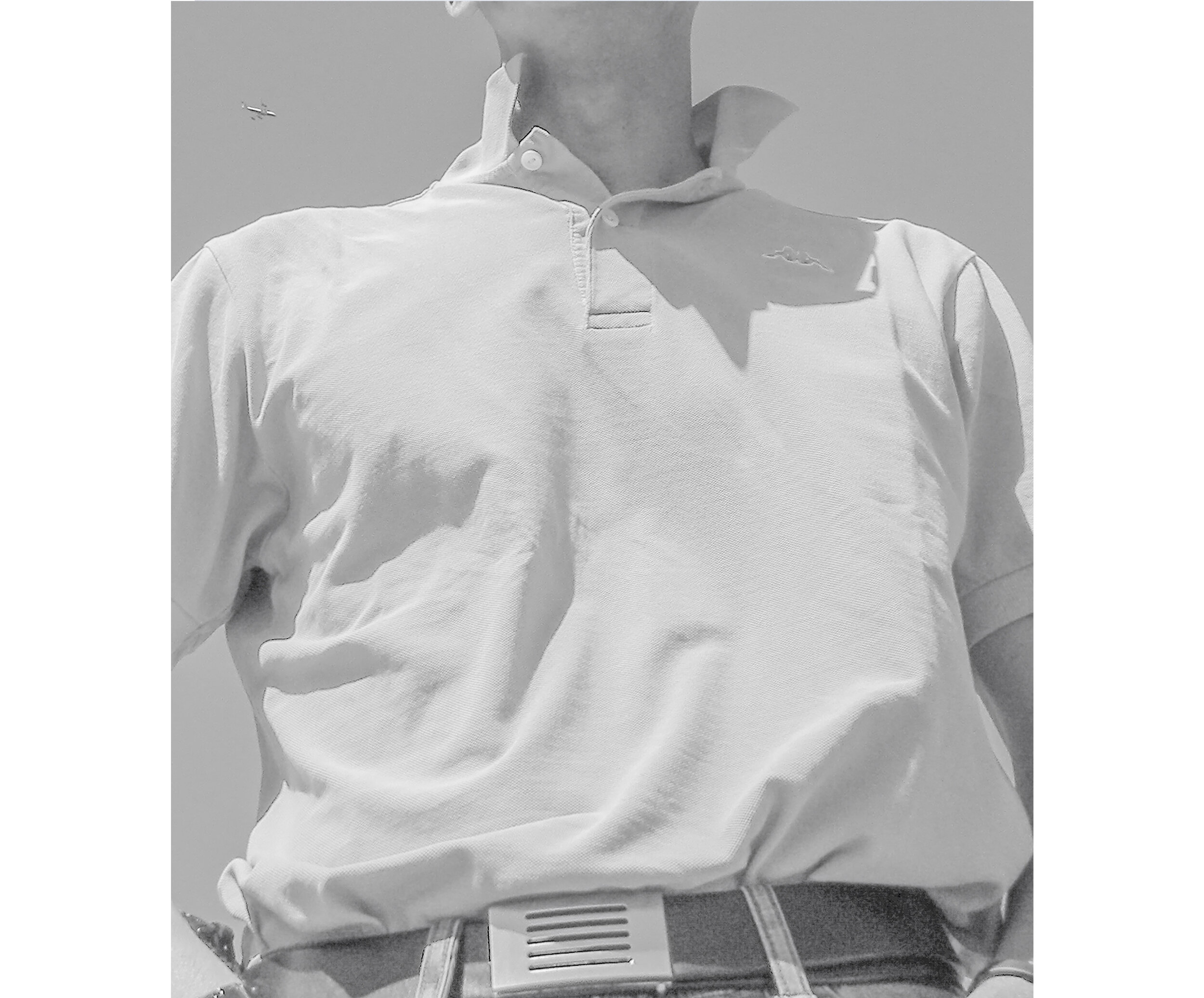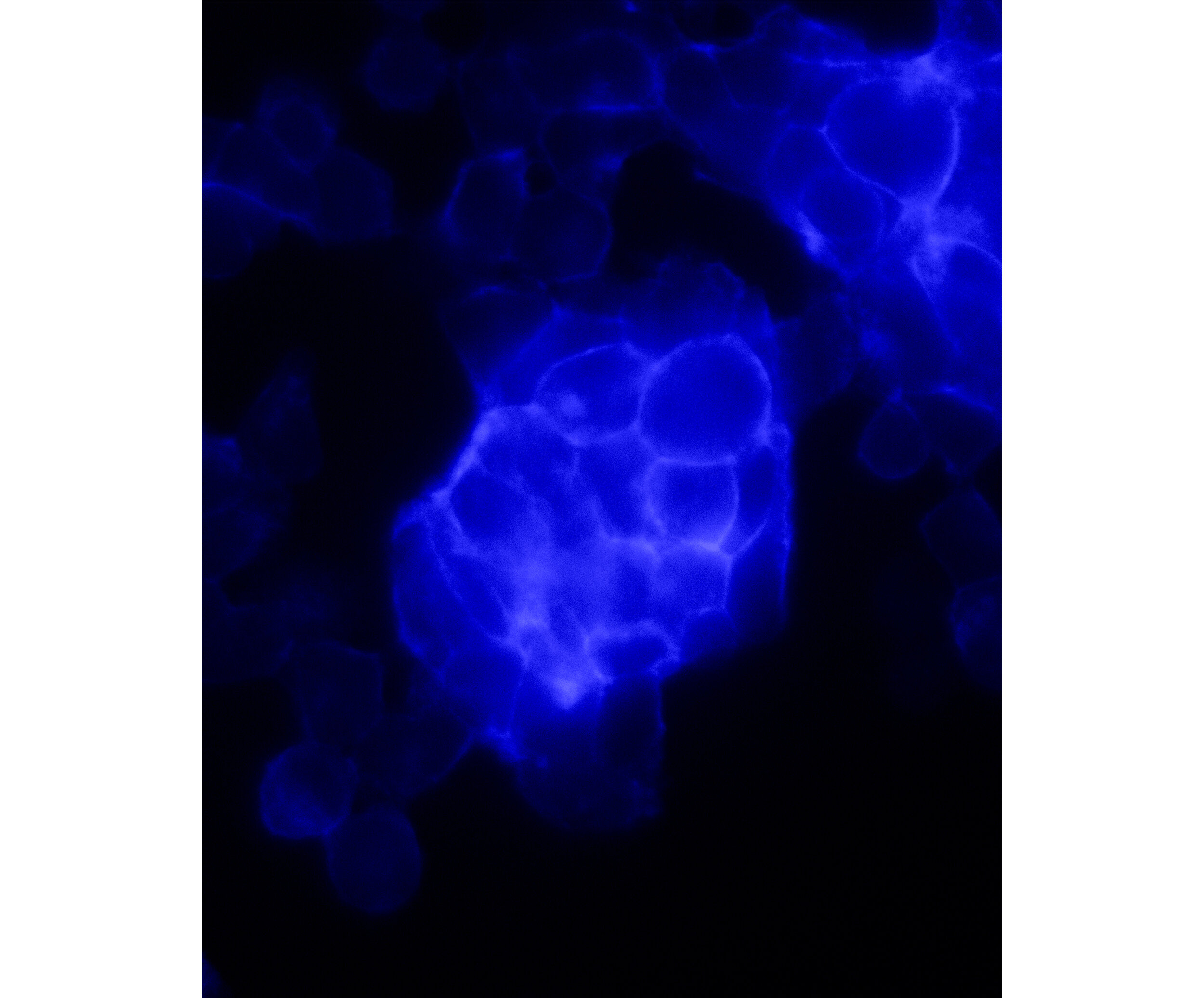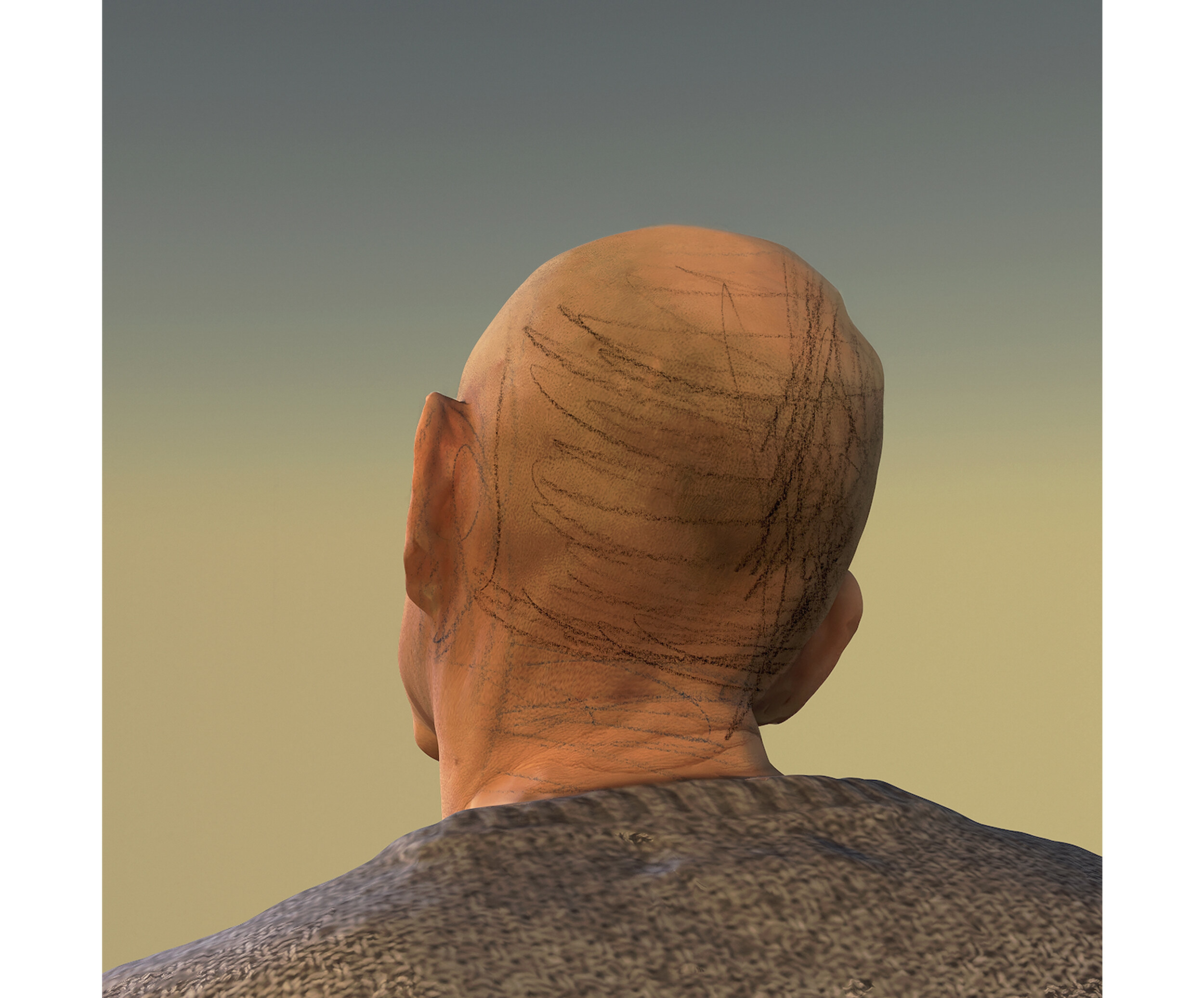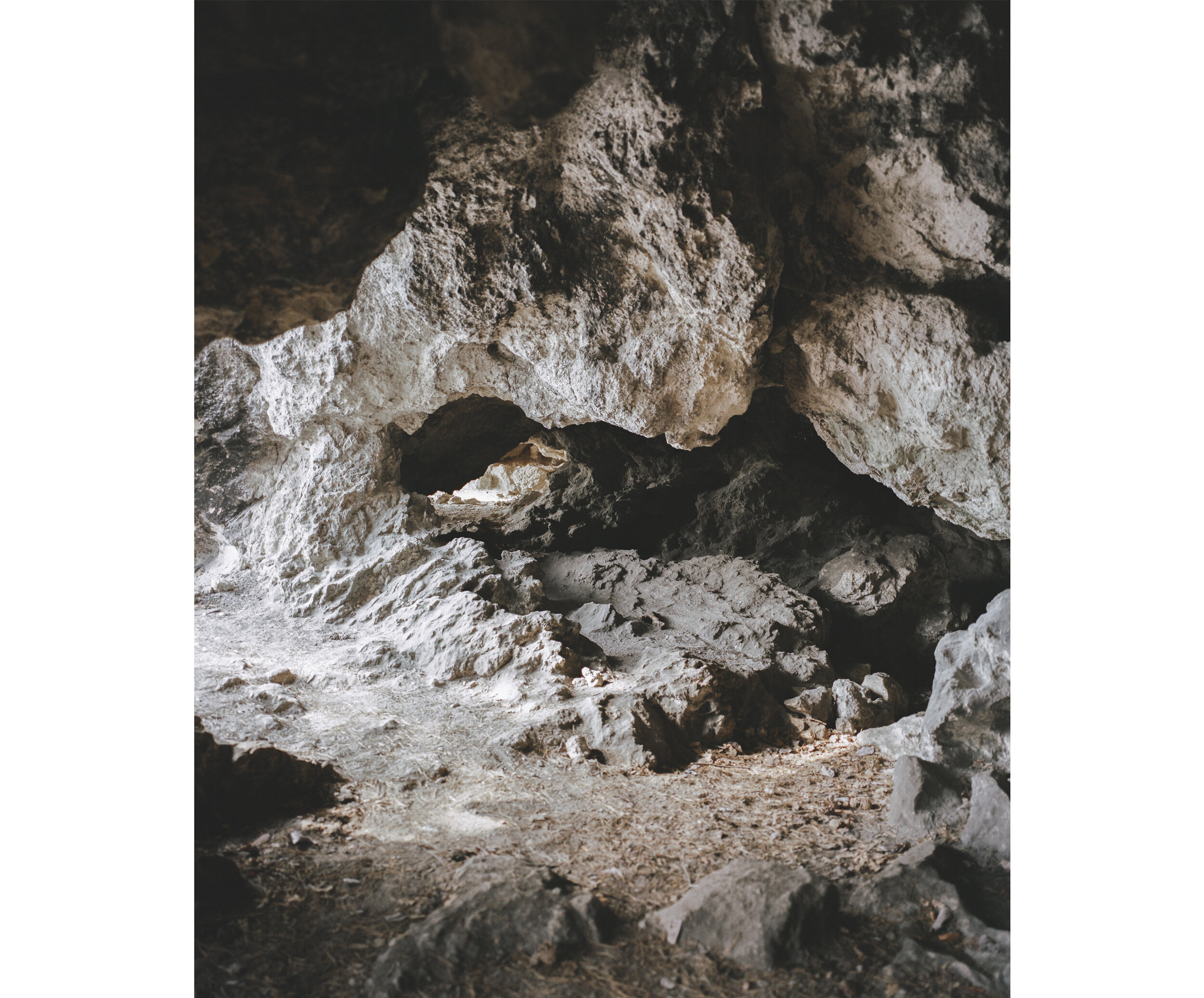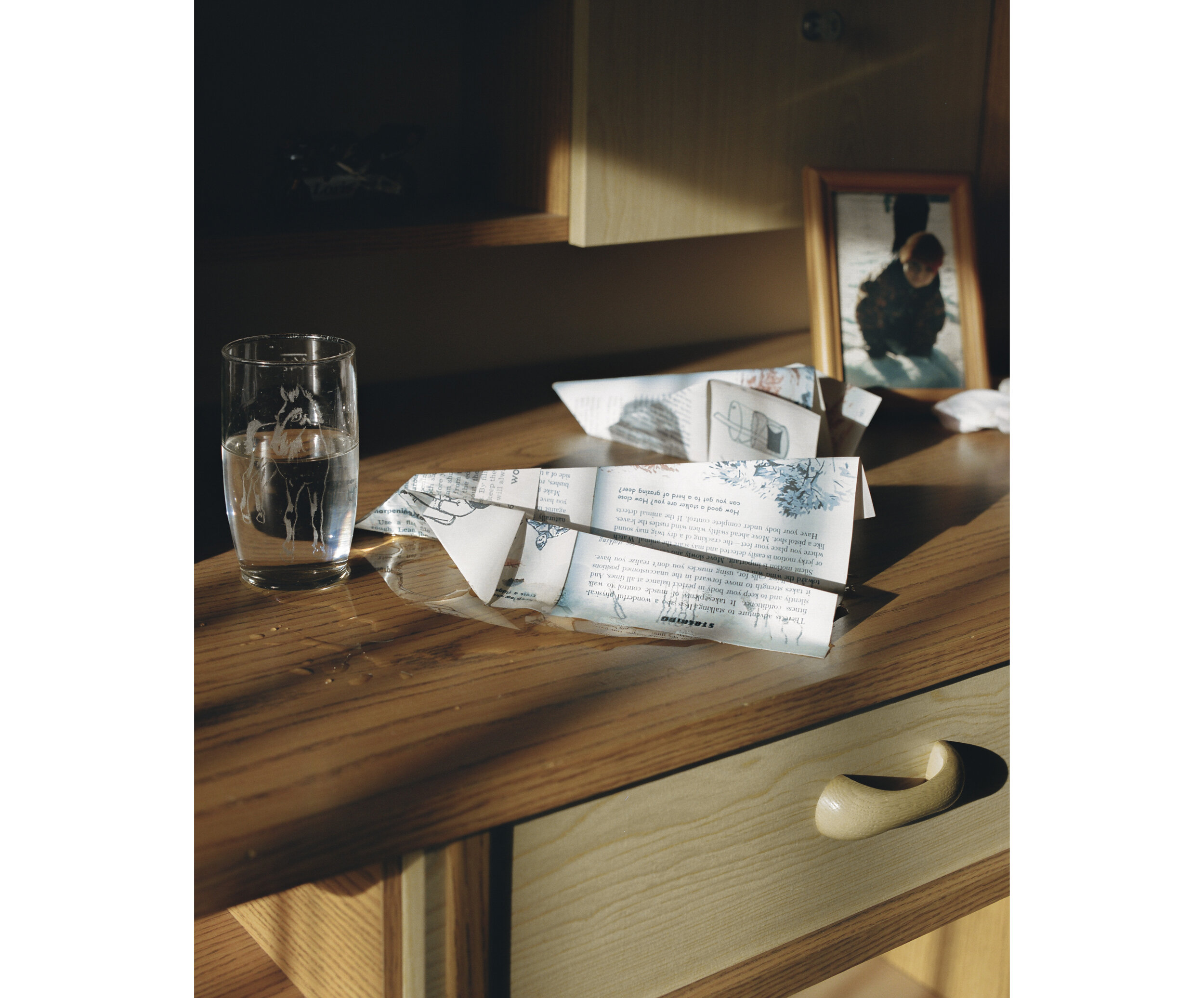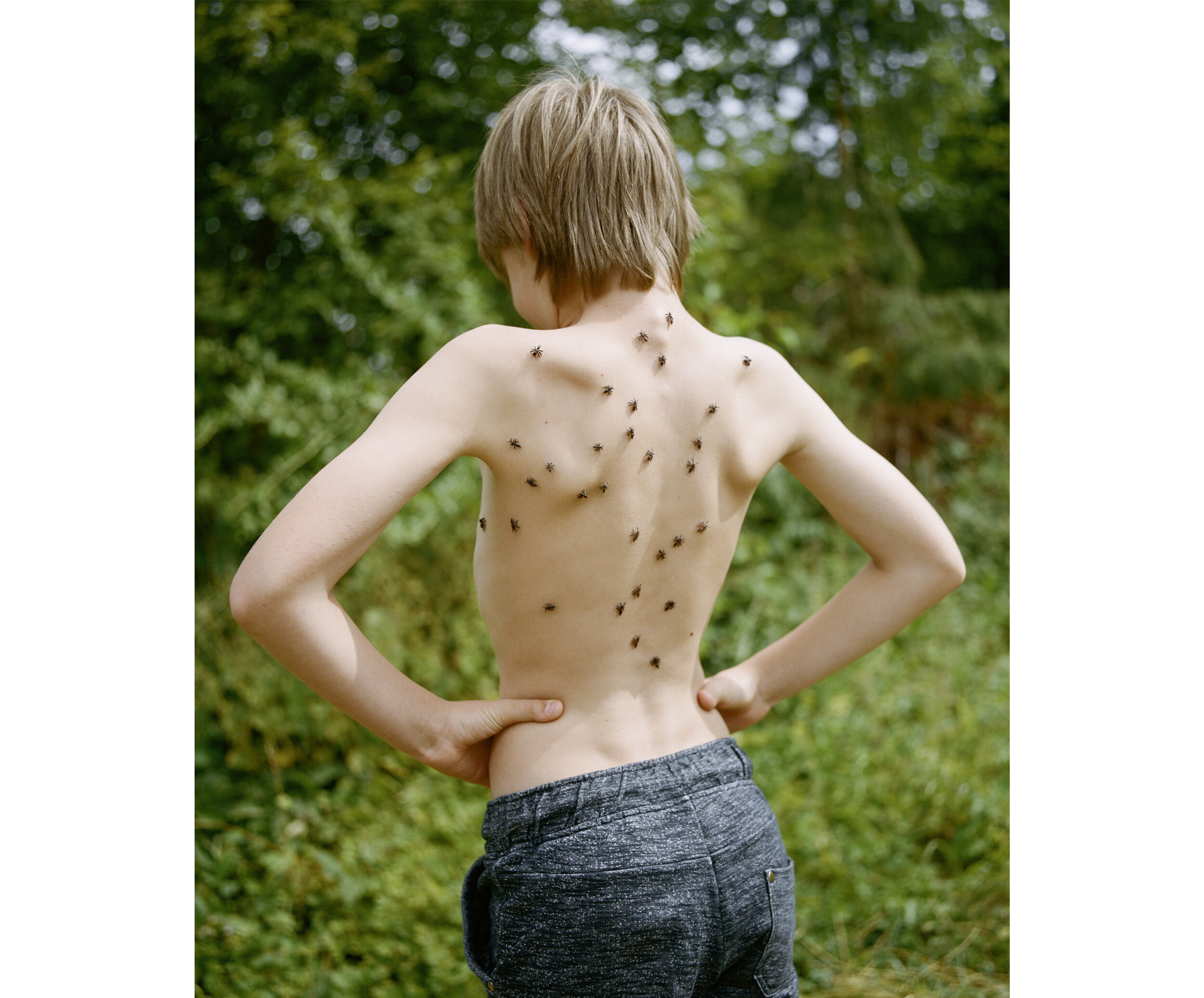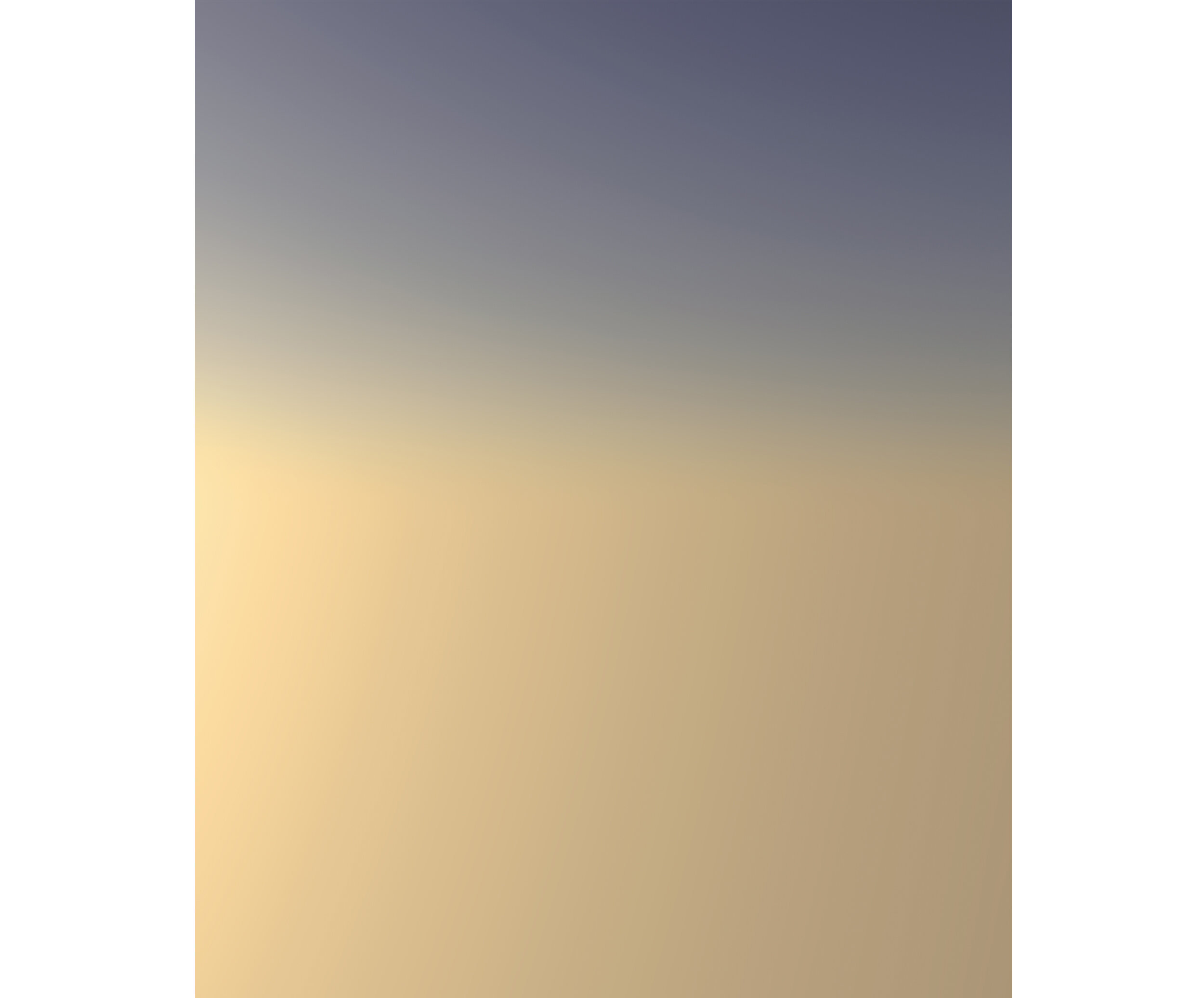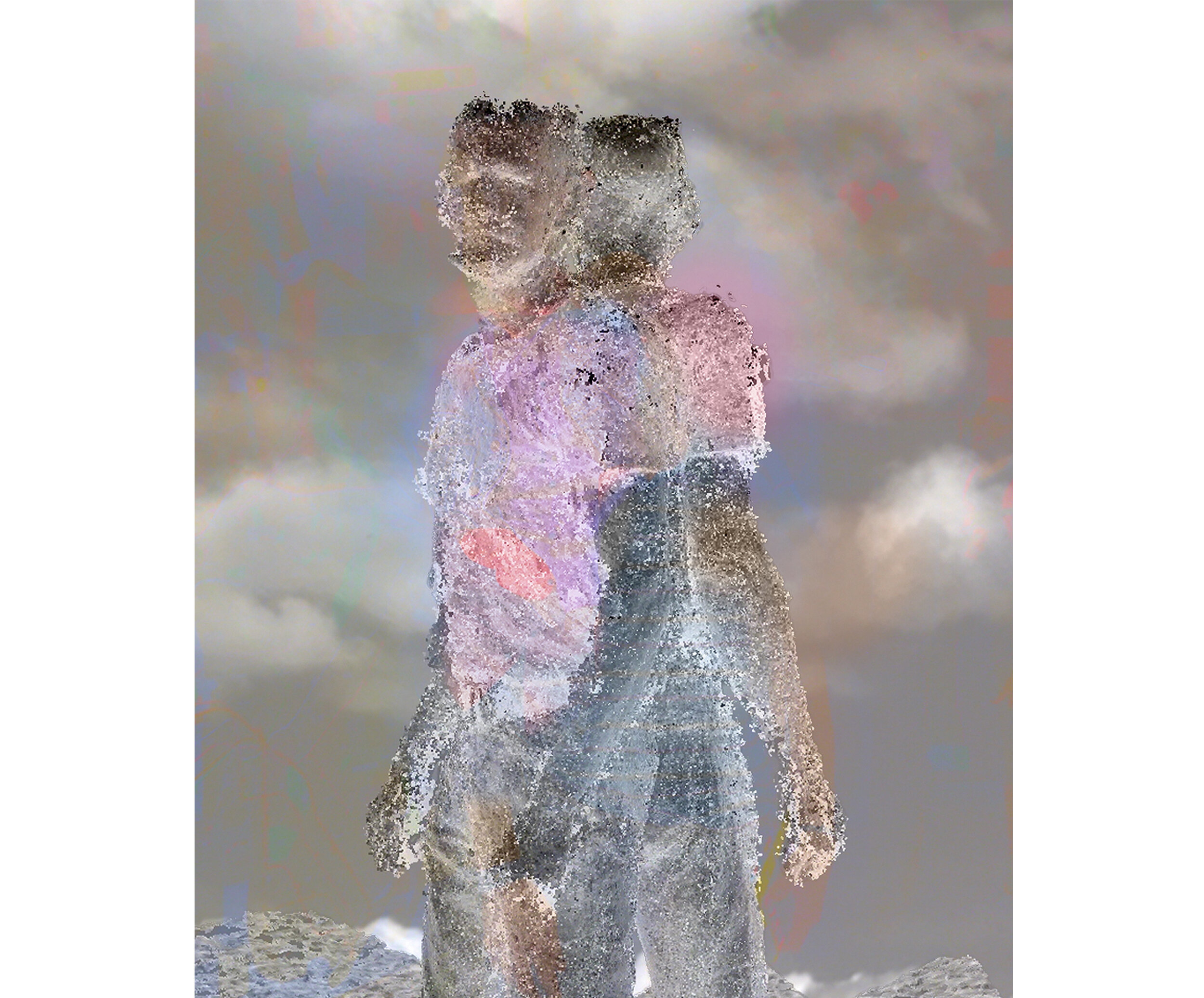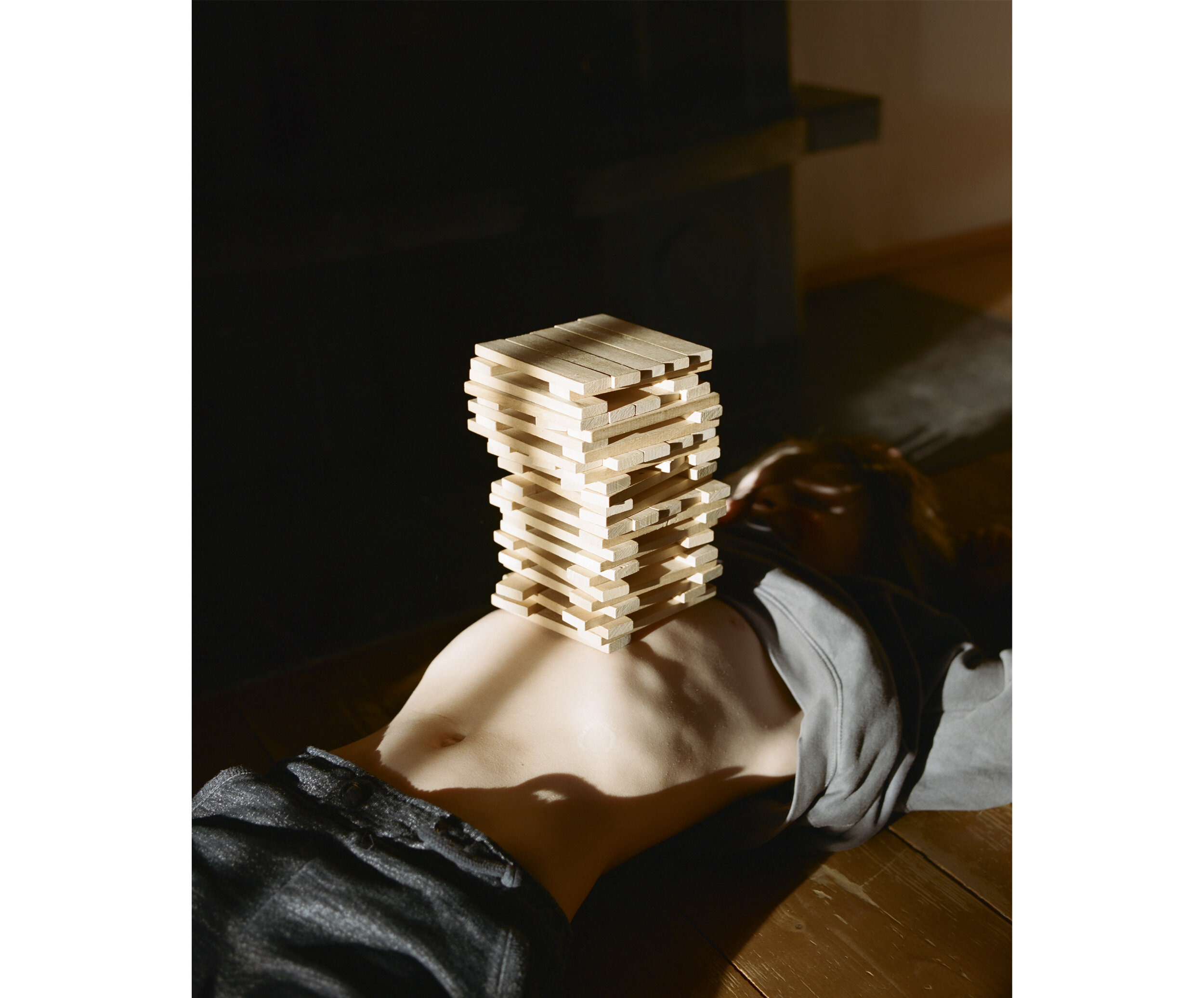Simon Lehner (b.1996) is a lens-based artist and photographer currently working and living in Vienna. He graduated from the University of Applied Arts Vienna in 2020 and has been involved in several competitions such as Paris-Photo Carte Blanche award (2018) and Red Hook Labs New Artists (2019). Despite being a student at the time he has already given his first lecture at Bauhaus University. Simon Lehner was recently selected as a Foam Talent 2021 along with 20 others published in the latest edition. He will have a solo show at the Fotohof Salzburg this year. In his work Simon discusses notions of masculinity. How Far is a Lightyear deals with notions of trauma, memory and identity formed through family.
The boy in Simon’s series is similar to Hunter, the main character of Wim Wenders Paris, Texas (1984) who was the subject of a troubling childhood. Hunter was separated from his parents when he turned two. They both disappeared and so he grew up with his aunt and uncle. Together they formed a picture-perfect family in the Los Angeles suburbs. Some five years later the father returns from the Mojave Desert. At first Hunter is not willing to accept the long-lost father as his parent. He can only really accept Travis as his father once they watch an old Super8 film recorded when Hunter was 2 years old, depicting Hunter, his mother and Travis on holiday. When Hunter and Travis go on a quest to find the mother in Houston, Hunter explains to Travis how the universe once was whole. At some point it all exploded and all of the universe’s components scattered all over the place, colliding, forming new planets and suns. Hunter’s childhood was obstructed when his parents left. Later on, he describes how if a man puts a baby down, travelled at the speed of light for only one hour and returned, the baby would have turned into an old man. Hunter’s words sound innocent, yet they carry the heavy burden of being abandoned; his parents disappearance left a gap in his life so huge it felt unimaginable to ever close it. He describes the memories of his mother as a movie character in a galaxy far far away. Yet, he also always knew that his father was walking and talking somewhere out there in the vast universe. Hunter has hope of reunification. He is obsessed with space crafts and is determined to close the gap, to find his mother, to travel to Houston at light speed in merely 3 seconds.
The little boy in Simon’s work is an autobiographical character that has some similarities with Hunter; both have an affinity for expressing their heavy burdens through metaphors in terminology surrounding space travel.
‘How far is a lightyear’? is the first question the little boy asked his father when they first met. Unlike Hunter, he has no hope, he cannot reunify with the absent father. He is left with a wound too big for any child’s imagination to close. Drawings, renderings of found photos and sketches outline atrocities, trauma and most of all absence. Simon’s photographs are joyful memorabilia from his childhood. They are soaked in nostalgia. Yet, despite their playfulness, they document a boy at the verge of chaos, in the firing line of a love story gone wrong. The playing cards, depicting a queen on top and a king lying flat in the shadow, are balanced for this moment in time, but something will happen. Soon the boy will twitch his eye muscle and both father and mother will fall into an abyss, dragging him down with them and all that remains for us viewers is to repeat a silent mantra: so far so good, so far so good. The tiniest movement will make the Jenga tower collapse, burying the boy beneath it. He is trying to appear strong, ants crawling up his back, no sting too painful to give up. Nothing can shatter him but the tiniest amount of wind blowing through his hair, leaving him devastated in his bed, unable to move.
Simon uses the medium of photography with purpose. In no other medium could he create the same paranoia of an impending imbalance; the little boy manoeuvres through his childhood in joy and play, always balancing, yet also always at the verge of losing control. Through sketches, renderings, archival imagery and photography Simon manages to outline the ineffable.
Writing and interview by Frederik Marks (translated from conversation in German).
FM: Congratulations on your nomination as a Foam Talent 2021! How does it feel to be nominated? I remember that especially at the beginning of my studies the likes of David de Beyter and Daniel Shea were huge inspirations. They were the photographers I really looked up to. Do you share the same kind of admiration for the previous Foam Talents?
SL: The first time I encountered Foam was probably around 5 years ago. At that time Thomas Albdorf was an assistant in my course at the University of Applied Arts Vienna. He introduced us to all of the previous Foam talents. That definitely opened my eyes to new ways of photographing. Contemporary approaches to photography were not really taught at my university at the time. I realized that I definitely want to be involved with Foam at some point in my career. I was a runner up last year and now this year I finally made it into the Foam Talent shortlist. It is true, many of the photographers previously nominated for Foam were huge inspirations for me as well 5 years ago, I imagined what my life would be like if I ever became one. It is still strange for me because I really looked up to these people, and suddenly you get the message you are a Foam Talent, but it still feels very unreal to me to be part of a group of people that were my role models.
FM: How did you experience your time at university as a whole?
SL: I was studying for the last five years. I think that most of my time at university was about personal development and not always about learning new photographic and other lens-based skills that are essential to my practice now. For example, everything relating 3d modelling and rendering is self-taught. Yet, nonetheless I believe that this personal development and also the people I met at university were crucial in my development as a photographer also.
FM: I can very much relate that university did not necessarily teach me skills that blur photography with other media like painting and 3D modelling / rendering. How if not through Uni did you come in contact with mixing photography with lens-based art done with the likes of Blendr?
SL: I first got interested in renderings when I learned that ad campaigns by Mercedes are now almost entirely rendered. I really like the idea that at this moment in time our perception of what is photography is expanded subconsciously. I really like to play at the border of what is perceived as photography and what is perceived as render.
FM: When I had a look at your early photographic work it appears like classical German/ Austrian documentary photography. In Men Don’t Play it is the first time that you start to mix classical documentary work with 3D renderings. I think it is fascinating to see your work expand and include more work that is non photographic. It feels as though you can increasingly bring lens-based renderings and photography to the same visual language, which I think is really hard to achieve. Especially with archive material in contemporary photography this same visual language seems to be absent and some archival images seem like gimmicks that support the message of the photographs without really communicating within the same visual language. Coming back to ‘How far is a light year’: I feel as if you use the medium of photography in this series for a precise reason: to show balance at the verge of collapse. I’ve read in a previous interview that the image with the boy balancing two playing cards has an autobiographic background. Therefore, I’d like to ask how you came up with that specific image.
SL: Most of the time my work is autobiographic. The balance of queen and king therefore represents my parents but simultaneously universal power struggles. The boy is me as a ten-year-old. I am trying to balance my way through life. The photographs are set in a domestic situation that allows for room of interpretation. All images in themselves represent accidental and every-day childhood memories. That way they are joyous and innocent and only in the context of the series, they could hold hints of power struggles, trauma and impending imbalance. I did not really know my father and I am trying to make him tangible in archive images and renderings.
FM: It seems as if the images show that the child is handling a stress test which will determine his future. Is this also the link to the photographs of the Jenga tower?
SL: Yes precisely. As children we are so fragile and every way in which we encounter the world and the way we are influenced by people in it can tip the development of a child in either or direction. The same idea applies for the photograph of stem cells: If stem cells are influenced in the stadium that I photographed them you could influence them in a way that will determine what they eventually grow into..
FM: Are the photographs of the stem cells archive material?
SL: No, I actually managed to take a picture with an electron microscope at the lab for stem cell research in Vienna.
FM: When did you realize that you wanted to release this project to the public, that you are not just creating it for yourself, but to make it accessible to a greater audience?
SL: Subconsciously I have always worked in the fields of masculine domains. At first, I was photographing MMA fighters and boxers, then I did a series on hunters and similarly in my project Men don’t play, which was about soldiers. I think that throughout the years I have continuously questioned why I am seeking out those kinds of subjects. I came to the realization that I am actually dealing with the issues discussed in How far is a lightyear?. It is likely that all of my previous projects were circling around my relationship with my father or lack there off. I was hesitant to make this series public and at first, I started it with the intention to keep it private, but I have realised that the longing for an absent person in your life is such a universal experience. I thought that my series might at least start a visual dialogue. I only really noticed that it worked when I exhibited the series as part of Paris Photo. Some people came up to me and explained that they know this kind of tension that I tried to capture. Without actually discussing the individual trauma it created a bond in empathy which was really moving.
FM: I have realised for myself that there is an overarching theme in my work as well. As soon as I realised what it was, I was first excited that I’d have broken the cycle, yet every time I start a new series, I end up coming back to the same issues in an abstracted form. Have you experienced a similar abstraction after working on How Far is a Lightyear?
SL: Yes absolutely, when I started the video work for my new series The mind is a voice, the voice is blind I thought I was creating work that was unrelated to my previous work, yet once again it is connected. I actually think it is a beautiful thing. Especially when you can see the progression of the same idea over and over again in another photographer’s work.
FM: When I saw the image of the boy that has ants crawling around his body, I first saw bees. Why did you choose the ants and what do they represent?
SL: The ants are another childhood reference. Because my father was absent, I always felt inclined to present myself as a strong man. I did not miss out any dares in order to receive recognition. The ants are a kind of dare and the boy poses to prove courage. The ants have a sensory, bodily response on the viewer. It feels like an uncomfortable electricity. The same kind of uncomfortable tingle that I felt whenever I was in the presence of my father. Therefore, the boy tries to show a masculine facade admits this rush of uneasiness.
FM: Shortly after presenting your series at Paris you were commissioned to shoot an editorial for Vogue. How did that happen, and do you enjoy doing commissioned work just as much as personal work?
SL: When I showed ‘How far is a lightyear’ in New York in 2019, the US Vogue approached me and asked whether I think I could adapt my visual language to a fashion editorial. They were specifically looking at the pose of the boy with ants on his back. I was completely paralised at first because I had not really work in fashion before. As long as I can carry over a personal concept into the commission, I really enjoy doing it. If it is only about the surface where concept and story is irrelevant, I don’t really like it as much. As long as I can bring a concept into it, whether acknowledged by the client or not, I really enjoy doing commissions. For example, when I did a series for a champagne brand, I was able to work completely freely and was able to bring in personal concepts that made the whole project exciting for me.
FM: Thank you so much for taking the time to have a chat with me. As a last question I’d like to ask where you see yourself in ten years?
SL: No problem at all. I really enjoy doing interviews. Hopefully I’ll have gallery representation by that point. My absolute dream however is a solo show in America or Germany or generally a big solo show. For my future I hope to still have the freedom to work in photography. That privilege, to be able to work creatively, keeps me going. I am excited to see all of the new technologies that will emerge within ten years – the ever-blurring line between lens-based and computer images and how I can push photography into new realms in the hopes to find a completely unfamiliar visual language.
Simon Lehner juxtaposes How far is a lightyear with his new series The Mind is a Voice, the Voice is Blind for the new Foam Talent issue.

